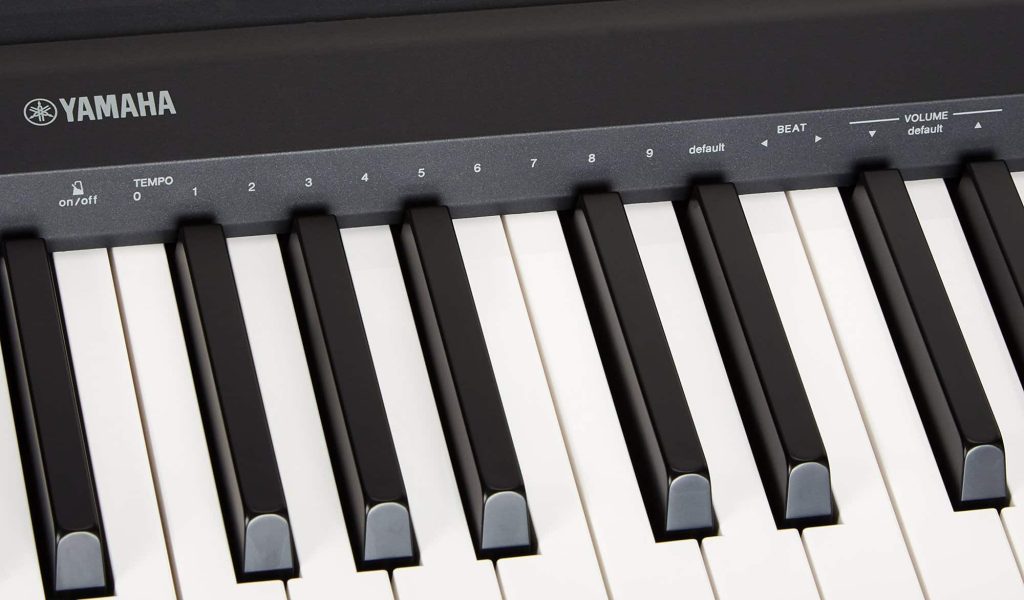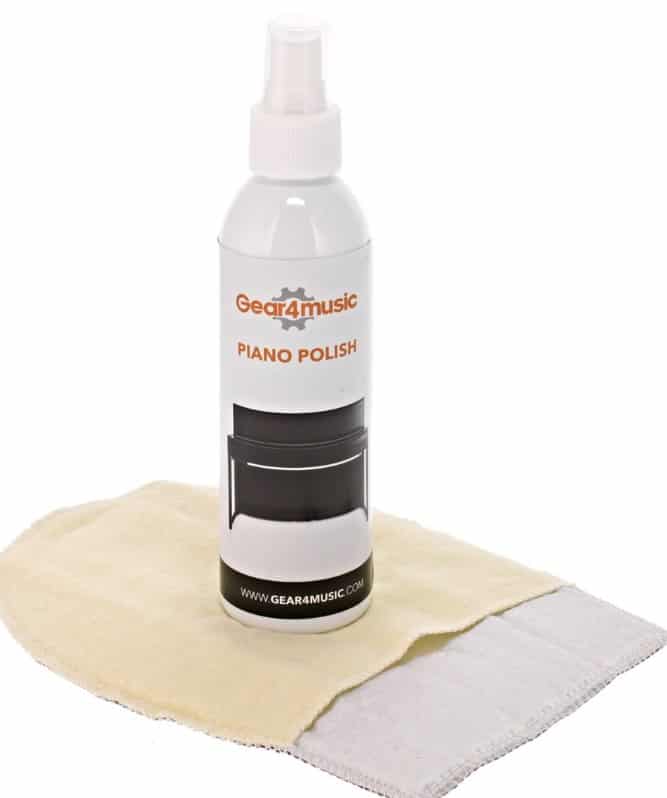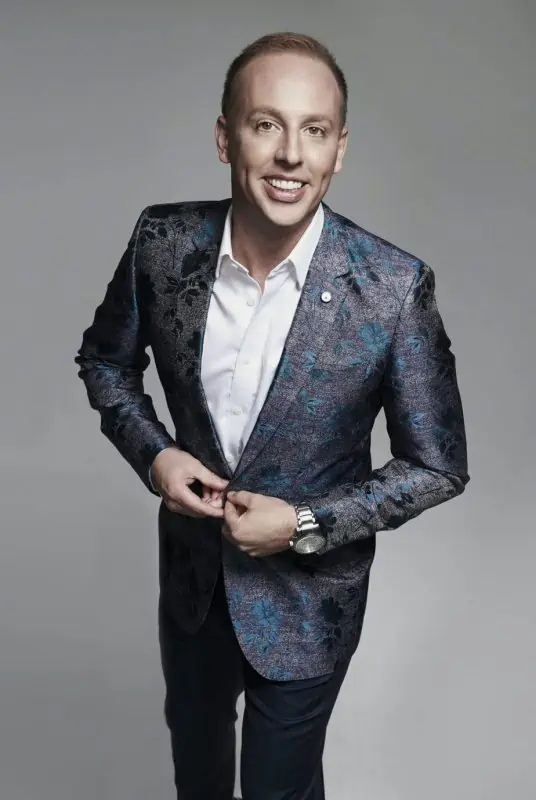The Yamaha P71 digital piano has become a popular choice, especially for those new to playing the piano.
It’s known for being affordable, feeling realistic to play, and having features that benefit both beginners and experienced musicians.
This review will closely examine the P71’s pros and cons, and discuss whether it’s a good fit for different playing styles.
It’s my honest and personal thoughts – you may agree (or disagree!) with them, and I’d be interested to know your thoughts in the comments at the bottom.
Hopefully, by the end of this Yamaha P71 review, you’ll be able to decide if the Yamaha P71 is the right instrument to start your musical journey.
Origins of the Yamaha P71

This model is part of Yamaha’s P (Portable) series, which is known for offering compact, lightweight entry level digital pianos with advanced features that mimic the feel and sound of an acoustic piano.
Introduced as an Amazon exclusive, the Yamaha P71 was designed to provide an accessible entry point into piano playing without compromising on the quality that Yamaha is known for.
The origins of the P71 lie in Yamaha’s broader strategy to reach a wider audience by partnering with major retailers to offer instruments that are both accessible and appealing to a diverse range of customers
Yamaha, a Japanese multinational corporation and conglomerate with a very long history in musical instrument manufacturing, has always been at the forefront of innovation in music technology.
The company has a storied history that dates back to its founding in 1887 by Torakusu Yamaha, initially focusing on piano and reed organ manufacturing.
Over the years, Yamaha has expanded its product range significantly to include a wide variety of musical instrument sounds, professional audio equipment, and more.

The development of the P71, like other Yamaha digital pianos, is rooted in the company’s deep understanding of music, artistry, and the technical aspects of sound production.
Yamaha’s expertise in acoustic pianos is directly translated into their digital models, ensuring that they replicate the acoustic piano experience as closely as possible.
This involves the use of sophisticated sampling techniques to capture the sound of their concert grand pianos, as well as advanced portable keyboards technologies to emulate the touch and feel of real piano keys.
Yamaha P71

FEATURES: 10 different piano voices, including digitally sampled acoustic piano tones
OTHER INFO: Dual mode allows you to layer two voices together
- Easy to move around your home
- Great for practicing proper finger technique
- Yamaha's AWM sampling technology for rich sound
- Easy to change settings with one button
- Competitively priced for a digital piano with these features
- Limited sound options (10 voices)
- No app connectivity
- Can't record performances
- Lacks traditional sustain pedal connection
- Headphone jack placement might be inconvenient
When you click ‘Check Price’, you’ll see there are loads of great places to buy this item. Our personal favorite is Sweetwater for the US, and Thomann and Gear4Music for the UK & Europe.
They are the largest music retailers, with excellent customer service, competitive prices, really fast shipping, and the longest guarantees.
The professional musician who wrote this article combined many things,
from the product build, manufacturer’s reputation through to feedback
from other users, to create our famous TedScore™.
The Ultimate Yamaha P71 Review
The Yamaha P71 stands out as an affordable full-sized digital piano, exclusively available through Amazon, mirroring the features of the well-regarded P45.
This instrument offers significant value, especially for beginners, with several notable characteristics.
Equipped with 88 keys, the P71 surpasses many of its competitors in the same price bracket, which often come with fewer keys. This full electronic keyboard setup is a substantial benefit for those seeking a comprehensive playing experience.
A key aspect where the P71 excels is its key action. Utilizing Yamaha’s Graded Hammer Standard, a mechanism also found in the brand’s higher-end models, it offers superior touch response compared to what’s available from other manufacturers in similar price ranges.
The sound quality of the P71’s voices is impressively high, reflecting Yamaha’s ability to deliver exceptional audio performance at an accessible price point. This quality makes it a standout option in its category.
The affordability of the P71 is another significant advantage. It offers an excellent quality-to-price ratio, making it an attractive choice for entry-level players. This aspect raises questions about how Yamaha manages to maintain profitability with such competitively priced products.
Additionally, the compact and lightweight design of the P71, with a depth of less than 13 inches, makes it highly portable and easy to store.
This feature, along with its affordability, makes the P71 an ideal choice for young beginners, minimizing the financial risk for parents investing in a new activity for their children.
1. Design and Build Quality
Aesthetics and Construction
The P71 adopts a minimalist and elegant aesthetic, prioritizing functionality over excessive ornamentation.
The housing is crafted from high-grade plastic, ensuring a lightweight and portable design without compromising durability.
This material selection makes it ideal for musicians who frequently transport their instrument or have limited space constraints.
Portability and Durability
Weighing in at a mere 25 pounds, the P71 is exceptionally portable, making it easy to maneuver and store.
This portability, coupled with its compact size, allows for seamless integration into various living spaces and facilitates effortless transportation for rehearsals or performances.
Despite the plastic construction, the P71 exudes a sense of sturdiness and can withstand the rigors of regular use.
2. Performance and Sound Quality
Key Action and
Response
The P71 incorporates Yamaha’s renowned Graded Hammer Standard (GHS) action, meticulously designed to replicate the tactile experience of an acoustic piano.
The keys are weighted authentically, with heavier resistance in the bass register gradually transitioning to lighter feel in the treble, fostering a natural playing experience that translates seamlessly to acoustic pianos.
Additionally, the adjustable touch sensitivity empowers pianists to personalize their playing style and achieve optimal expressivity.
Sound Sampling and Output
Yamaha leverages its exceptional Advanced Wave Memory (AWM) technology to capture high-fidelity samples of a concert grand piano. This meticulous process translates into a rich, nuanced, and authentic sound that is not only a joy to play but also a pleasure to listen to.
While the P71 comes equipped with integrated 2*6W amps and 2*12cm speakers that are sufficient for home practice, connecting external speakers or headphones unlocks a more immersive and dynamic listening experience, particularly suitable for larger performances.
3. Functionality and Features
Interface and Controls
The P71 prioritizes a user-friendly interface, featuring a streamlined control panel with minimal buttons and a clear layout.
Most functionalities are accessed by strategically combining the function button with specific keys, fostering an intuitive learning curve for both novices and experienced players.
Connectivity Options
The P71 provides a range of essential connectivity options, including a USB port for seamless connection to computers and a headphone jack for silent practice sessions.
While it lacks features like Bluetooth or MIDI connectivity found in more advanced models, the USB port offers the versatility to record performances or leverage compatible music applications to enhance the learning experience.
4. User Experience and Versatility
Beginner-Friendly Features
The P71 is meticulously equipped with features that cater specifically to the needs of aspiring pianists.
The weighted keys play a pivotal role in fostering proper finger technique, laying a solid foundation for future development.
The metronome function is an invaluable tool for honing rhythmic precision, while the Duo mode allows students and teachers to play side-by-side on the same instrument, transforming piano lessons into interactive and engaging experiences.
Advanced Capabilities
While the P71 excels as a learning instrument, it also offers functionalities that cater to the evolving needs of developing pianists.
The ability to layer two unique sounds simultaneously unlocks creative sonic possibilities, while the adjustable touch sensitivity empowers players to refine their expressiveness.
The transpose function proves highly useful for playing along with recordings in various keys.
Must-Have Accessories for Yamaha P71
Stagg KEB-A10 X Style Keyboard Bench

FEATURES: Height Range: 49cm-53cm
OTHER INFO: Safety lock-screw mechanism for secure height adjustment
- Comfortable for players of any age
- Portable and easy to store
- Sturdy and well-made
- Affordable price
- Perfect for home or performances
- Limited weight capacity (3.4kg)
- Not as padded as some other benches
When you click ‘Check Price’, you’ll see there are loads of great places to buy this item. Our personal favorite is Sweetwater for the US, and Thomann and Gear4Music for the UK & Europe.
They are the largest music retailers, with excellent customer service, competitive prices, really fast shipping, and the longest guarantees.
The professional musician who wrote this article combined many things,
from the product build, manufacturer’s reputation through to feedback
from other users, to create our famous TedScore™.
Sennheiser HD 280 PRO II Closed Back Headphones

FEATURES: Frequency Response: 8Hz - 25kHz
OTHER INFO: Contact Pressure: 6N
- Durable construction for long-lasting use
- Collapsible and swiveling earcups for portability.
- High sound pressure level for powerful listening.
- Includes both 3.5mm and 1/4" jacks for wider compatibility.
- Affordable price point compared to high-end studio monitors.
- Not ideal for casual listening due to the flat frequency response
- Limited bass response compared to some bass-heavy headphones.
When you click ‘Check Price’, you’ll see there are loads of great places to buy this item. Our personal favorite is Sweetwater for the US, and Thomann and Gear4Music for the UK & Europe.
They are the largest music retailers, with excellent customer service, competitive prices, really fast shipping, and the longest guarantees.
The professional musician who wrote this article combined many things,
from the product build, manufacturer’s reputation through to feedback
from other users, to create our famous TedScore™.
Piano Polish and Cloth by Gear4music, 200ml

FEATURES: 200ml bottle of professional piano polish
OTHER INFO: Includes a microfibre polishing cloth
- Cleans and polishes your piano, removing dust, grime and fingerprints
- Protects the finish of your piano, prolonging its life
- Easy to use with the included polishing cloth
- Affordable price
- Suitable for both acoustic and digital pianos
- May require multiple applications for heavily soiled pianos
- Not suitable for heavily damaged or scratched finishes
When you click ‘Check Price’, you’ll see there are loads of great places to buy this item. Our personal favorite is Sweetwater for the US, and Thomann and Gear4Music for the UK & Europe.
They are the largest music retailers, with excellent customer service, competitive prices, really fast shipping, and the longest guarantees.
The professional musician who wrote this article combined many things,
from the product build, manufacturer’s reputation through to feedback
from other users, to create our famous TedScore™.
Other Options for Yamaha P71 Digital Piano
Korg G1 Air Digital Piano

FEATURES: Comes with Light, Normal, Heavy, Stable, Fixed Keyboard Sensitivity
OTHER INFO: Maximum Note Storage: 45,000 Notes
- 32 high-quality sounds, including 3 concert pianos
- Slim, stylish design
- Slim, stylish design
- Bluetooth speaker functionality
- Handcrafted in Japan for durability
- 120 maximum polyphony
- Fewer sounds (29) compared to some competitors.
- Heavy (42kg) and less portable.
- Pricier due to quality and features.
When you click ‘Check Price’, you’ll see there are loads of great places to buy this item. Our personal favorite is Sweetwater for the US, and Thomann and Gear4Music for the UK & Europe.
They are the largest music retailers, with excellent customer service, competitive prices, really fast shipping, and the longest guarantees.
The professional musician who wrote this article combined many things,
from the product build, manufacturer’s reputation through to feedback
from other users, to create our famous TedScore™.
Roland FP-30X Digital Piano

FEATURES:Max. Polyphony: 256
OTHER INFO: Speakers: 12 x 2 cm
- Advanced sound engine delivers dynamic and responsive piano sound
- Versatile connectivity options including Bluetooth MIDI and Audio
- Compact and lightweight design, ideal for both home and stage use
- PHA-4 keyboard offers a realistic piano touch.
- Powerful onboard speakers with dedicated modes for optimal sound quality
- Only basic ambience and brilliance adjustments available.
- Advanced features need the Piano Every Day app.
When you click ‘Check Price’, you’ll see there are loads of great places to buy this item. Our personal favorite is Sweetwater for the US, and Thomann and Gear4Music for the UK & Europe.
They are the largest music retailers, with excellent customer service, competitive prices, really fast shipping, and the longest guarantees.
The professional musician who wrote this article combined many things,
from the product build, manufacturer’s reputation through to feedback
from other users, to create our famous TedScore™.
Kawai CN29 Digital Piano

FEATURES: Concert Magic Songs: 40
OTHER INFO: 7 Beats, Tempo and Volume adjustable
- Exceptional touch response mimicking an acoustic grand piano
- Embedded counterweights in keys for nuanced dynamics
- Advanced sound technology in partnership with Onkyo for crystal clear audio
- Virtual Technician app allows for detailed sound customization
- Comprehensive lesson function for self-paced learning
- Higher price point might be prohibitive for beginners
- Limited to 192-note polyphony compared to some higher-end models
When you click ‘Check Price’, you’ll see there are loads of great places to buy this item. Our personal favorite is Sweetwater for the US, and Thomann and Gear4Music for the UK & Europe.
They are the largest music retailers, with excellent customer service, competitive prices, really fast shipping, and the longest guarantees.
The professional musician who wrote this article combined many things,
from the product build, manufacturer’s reputation through to feedback
from other users, to create our famous TedScore™.
Yamaha P71 Review
Summary
The Yamaha P71 is a strong contender for beginners looking for a digital piano.
Its weighted keys, which mimic the feel of an acoustic piano, help develop proper technique and finger strength, making the transition to an acoustic piano smoother in the future.
Additionally, the dual mode is a valuable tool for interactive learning, allowing teachers to play alongside their students.
While portable and affordable, the P71 might not be ideal for professional musicians due to its limited features, such as lower polyphony.
However, for beginners seeking a balance of quality and affordability, the P71 is a solid choice. It’s for this reason I actually think the P71 is a really good instrument that, within its price range, cannot be beaten.
Although, as it’s now an old model – it’s really quite difficult to find a new instrument for sale. If you have that trouble, I’d strongly advise you to consider the P125 instead – and you can find an in-depth review here.
What are your thoughts on the Yamaha P71?
Is it a good option for beginners?
FAQ's
The Yamaha P71 and P45 are essentially the same in terms of features and specifications, including true stereo sound recorded from Yamaha’s grand pianos. Both models offer 88 fully weighted keys and use Yamaha’s Advanced Wave Memory (AWM) sampling to create rich, musical tones.
The main difference might be their availability, as the P71 is typically an Amazon-exclusive model, making it more accessible to online shoppers. The choice between them often comes down to price and purchasing convenience rather than technical superiority.
Yes, the Yamaha P71 has graded hammer action keys, which means the keys feel heavier in the lower register and lighter in the higher register, mimicking the feel of an acoustic piano.
The Yamaha P71 does not typically come with a stand included in the purchase. It is sold as a digital piano keyboard, and while some retailers might offer bundles that include a stand, these are additional accessories.
Buyers looking for a stand will find that Yamaha and other manufacturers offer compatible stands, which must be purchased separately. It’s always a good idea to check the specific bundle options or deals that might include a stand, a bench, or other accessories.
The main difference between the Yamaha P and U series is the cabinet design and features:
-
P Series: More portable and lightweight, with fewer features, ideal for beginners and budget-conscious buyers.
-
U Series: Console-style cabinets with more features like additional voices, rhythms, and speaker systems, better suited for intermediate players and those who want a more furniture-like instrument.











The section on the P71’s advanced capabilities intrigues me. As someone who composes music that demands a range of expression and sophistication from an instrument, understanding how this digital piano handles complex pieces and if it allows for nuanced performance is critical. Looking forward to delving into this aspect.
Yo, Robert Emery, hit us up with those must-have accessories for the Yamaha P71. Does it come with a sustain pedal or should we be looking to grab one on the side? What about stands or piano covers? You know, gotta keep the new baby safe and sound.
You can get different packages from different shops. Just see what bundles they have on offer…
The performance and sound quality review section is music to my ears. Yamaha’s reputation for replicating concert grand piano sounds in their digital pianos has always fascinated me. Looking forward to hearing the P71’s range and whether it lives up to this legacy.
Just read about the design and build quality and I’m so impressed! It’s not easy finding a piano that’s not gonna eat all the space in my room but still feels and sounds like a dream. It sounds like the Yamaha P71 is exactly what I’ve been looking for. Saving up my part-time job money has never felt more worth it.
Regarding the connectivity options, does the P71 support MIDI connections via USB? This could be a game-changer for music producers looking to incorporate this digital piano into their setups.
It’s always exciting to see how digital pianos evolve. The key action and response section caught my eye. A digital piano that closely mimics the feel of an acoustic piano’s keys can make a huge difference in both performance and learning. How does the Yamaha P71 stand on this front? Does it offer graded hammer standard (GHS) keyboard?
I’m interested in the portability and durability section. Having a robust yet lightweight piano is essential for me since we have limited space and my kids can be quite the little adventurers.
Curious about the sound sampling and output part. Yamaha usually nails it with their sound engine but did they incorporate their advanced wave memory (AWM) stereo sampling in the P71? This is crucial for the dynamic range and overall expressiveness.
Hey Robert Emery, was wondering if the Yamaha P71’s beginner-friendly features are easy for someone totally new to piano to start with? Also, how does it compare to other beginner pianos in terms of learning curve?
Yup it is. It’s a great little piano.
i have the same question, been trying to pick between this and another model for weeks now